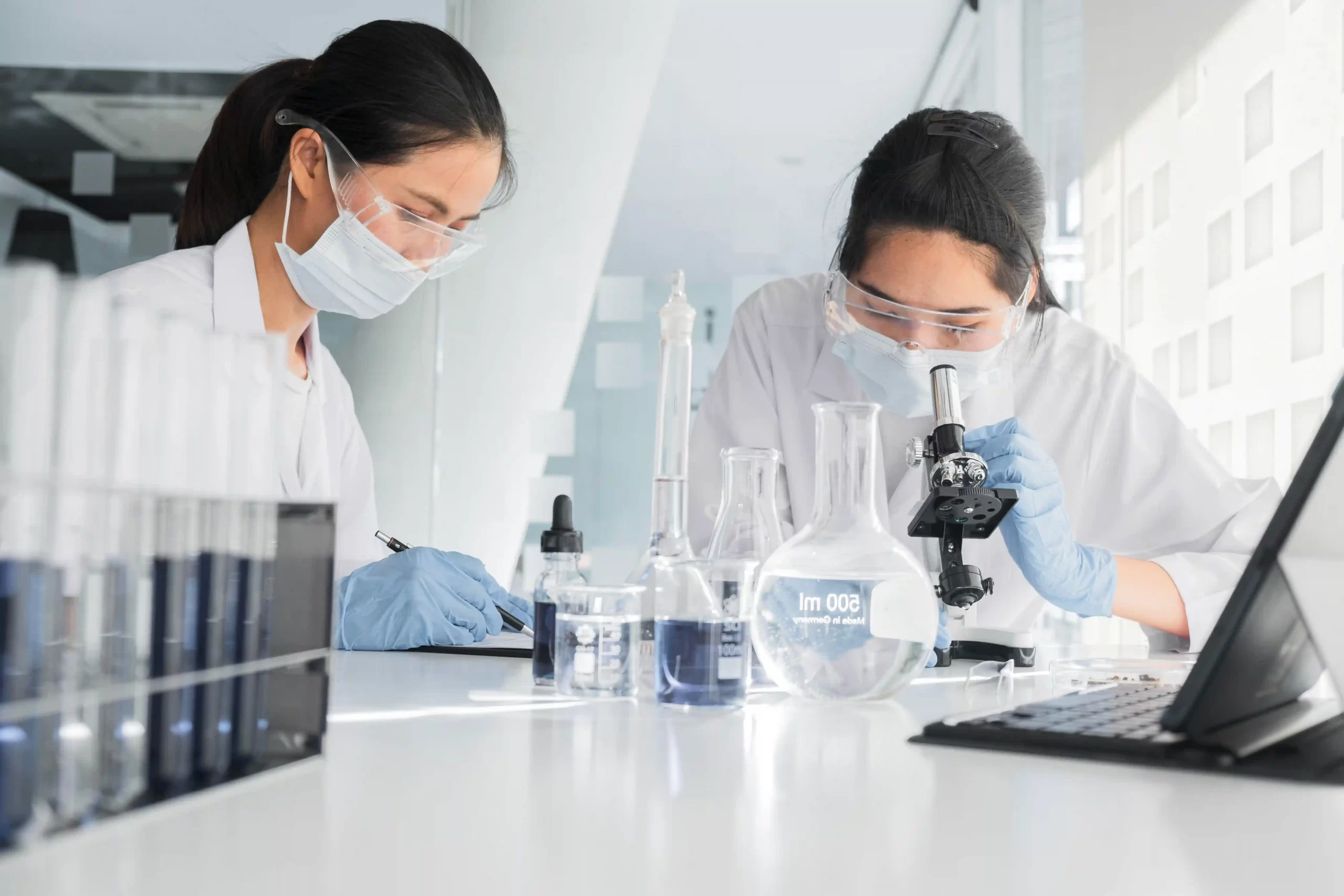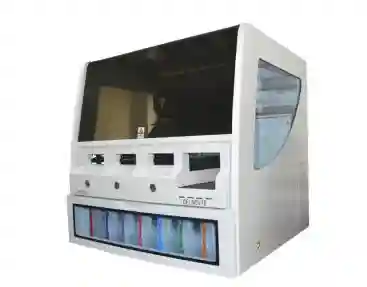Automated vs. Manual IHC Stainers: Time, Cost & Error Rates in High-Throughput Labs
In the world of immunohistochemistry, efficiency and accuracy are paramount. Automated IHC stainers, like Senot Biotech’s cutting-edge technology, significantly outperform manual methods, offering faster throughput and reduced error rates. This blog will discover how automation is revolutionizing laboratory operations in this in-depth comparison.
What Are the Key Differences Between Automated and Manual IHC Stainers?
Efficiency and Throughput
When looking at automated IHC staining machines versus techniques, it’s important to consider efficiency and speed as key factors. An automated immunohistochemistry stainer can process 60 samples in just 2 and a half hours, which represents a notable advancement compared to the laborious and time-consuming nature of manual approaches. Automation simplifies tasks by cutting down the amount of involvement needed from lab personnel enabling an increase, in the number of samples processed within a given time frame.
|
Aspect |
Automated IHC Stainers |
Manual IHC Stainers |
|
Efficiency |
High due to automation |
Lower due to manual labor |
|
Throughput |
60 samples in 2.5 hours |
Limited by technician speed |
Cost Implications
The financial aspects of choosing automated IHC stainers over methods involve various considerations to weigh upon the decision-making process and truly reflect a mix of benefits and challenges in terms of cost-effectiveness and efficiency implications. Many factors come into play when deciding between automated IHC stainers and manual methods in terms of costs. Initially investing in automated equipment may seem costly. It can pay off in the long run through savings, labor expenses, and increased productivity. Moreover opting for automation can minimize wastage by accurately regulating reagent quantities compared to manual techniques which may result in inconsistencies and wasteful usage practices.
|
Aspect |
Automated IHC Stainers |
Manual IHC Stainers |
|
Initial Cost |
Higher |
Lower |
|
Operating Cost |
Lower due to efficiency |
Higher due to labor |
|
Reagent Usage |
Controlled, less wastage |
Variable, potential wastage |
Error Rates in IHC Processes
Error rates pose a challenge in labs with high throughput capacities. Automated systems improve precision by reducing the risk of error linked to manual staining methods. Errors in manual staining may stem from differences, in technique or interpretation but automated systems establish uniform procedures to guarantee consistent outcomes across all batches. Rapid intraoperative frozen immunohistochemistry can wrap up procedures within just 15 minutes significantly boosting diagnostic precision and cutting down delayed diagnosis instances.
|
Aspect |
Automated IHC Stainers |
Manual IHC Stainers |
|
Error Rate |
Low due to standardization |
Higher due to human error |
|
Consistency |
High |
Variable |
How Do Automated IHC Stainers Enhance Laboratory Operations?
Integration with Laboratory Information Systems
Automated IHC stainers seamlessly integrate with laboratory information systems (LIS), facilitating data management and traceability. This integration allows for efficient tracking of samples, results, and reagent usage, contributing to enhanced operational workflows. The ability to automatically log data reduces administrative burdens on laboratory staff and minimizes transcription errors.
Automation and Standardization Benefits
Automation brings numerous benefits, including standardization of protocols which ensures reproducibility of results across different runs and operators. This consistency is crucial for clinical diagnostics where reliability is paramount. Moreover, automation allows labs to implement quality control measures effectively, ensuring that each batch meets predefined standards before release.
Are There Any Limitations to Using Automated IHC Stainers?
Technological Constraints
While automated IHC stainers offer benefits; they also have limitations that must be addressed regularly through software updates and calibration for consistent performance upkeep. Furthermore, some assays and antibody types might not work with machines leading to the need, for continuous validation efforts.
Maintenance and Technical Support Needs
Automated systems require upkeep and technical assistance to guarantee continuous functionality in laboratories necessitating the training of staff or the establishment of service agreements with suppliers for prompt issue resolution and maintenance tasks, which may pose a constraint, for certain facilities.
In essence, automated IHC staining devices bring about enhancements, in productivity, cost efficiency, and error minimization when compared to manual techniques. However, they also necessitate evaluation of upfront expenses, technology compatibility, and maintenance requirements. By handling these aspects laboratories can streamline their processes and provide top-notch diagnostic services in a streamlined manner.
How Does Celnovte Stand Out as a Reliable IHC Stainer Supplier?
Product Range and Innovation
Celnovte stands out for its range of products and its focus on pushing boundaries through innovation. The company’s advanced immunohistochemistry staining machine showcases its commitment to driving progress in the industry. This machine boosts efficiency. Facilitates the exploration of new techniques like chromogenic in situ hybridization and multi-color immunohistochemistry. By broadening its product offerings Celnovte guarantees that laboratories have access, to top-notch solutions that cater to a variety of diagnostic requirements.
Customer Support and Service Excellence
Emphasizing customer support and service excellence enhances Celnovte’s standing as a supplier in the industry. They offer a range of support services such as installation assistance and training along, with continuous technical support. This dedication guarantees that laboratories can fully utilize their IHC stainers to reduce disruptions and improve efficiency.
Conclusion
In choosing between automated and manual IHC staining systems for laboratories consider factors such as efficiency, cost implications, and maintenance requirements alongside error rates and integration capabilities. Automated systems provide enhancements, in both speed and precision while cutting down on labor expenses and reagent wastage. Nevertheless, this decision also entails an assessment of upfront expenses and maintenance demands.
When laboratories strategically tackle these elements, they can enhance their efficiency and provide notch diagnostic services effectively.Celnovte’s dedication to innovation and exceptional service positions it as a trustworthy collaborator for labs in search of cutting-edge solutions, in immunohistochemistry staining.
FAQs on Automated vs. Manual IHC Staining
What are the primary advantages of automated IHC stainers over manual methods?
Automated IHC staining machines bring benefits compared to manual approaches. From enhancing efficiency by decreasing the labor time required for laboratory personnel to enabling the processing of sample volumes within a similar timeframe to increasing accuracy by reducing human errors in manual staining procedures. These automated systems standardize protocols to guarantee outcomes across different batches – a critical factor, in clinical diagnosis purposes.
How do error rates compare between automated and manual IHC staining?
Error rates are significantly reduced in automated IHC staining when compared to techniques. Errors during staining may arise from variations in method or interpretation; however automated systems adhere, to standardized procedures that guarantee uniform outcomes across different batches. As an example, Celnovte’s swift intraoperative frozen immunohistochemistry can finalize procedures within 15 minutes. This advancement significantly enhances precision and lowers the occurrence of delayed diagnoses.
Is the initial investment in automated IHC stainers justified by long-term benefits?
Investments in automated IHC staining machines are usually seen as worth it in the run due to benefits like saving on labor costs and time as well, as improving precision. Even though the initial cost may seem high at a glance the efficiencies gained and less wastage of reagents can result in considerable savings over time. Furthermore automating processes can improve how labs function by connecting with lab information systems (LIS) making it easier to manage data and keep track of everything.




